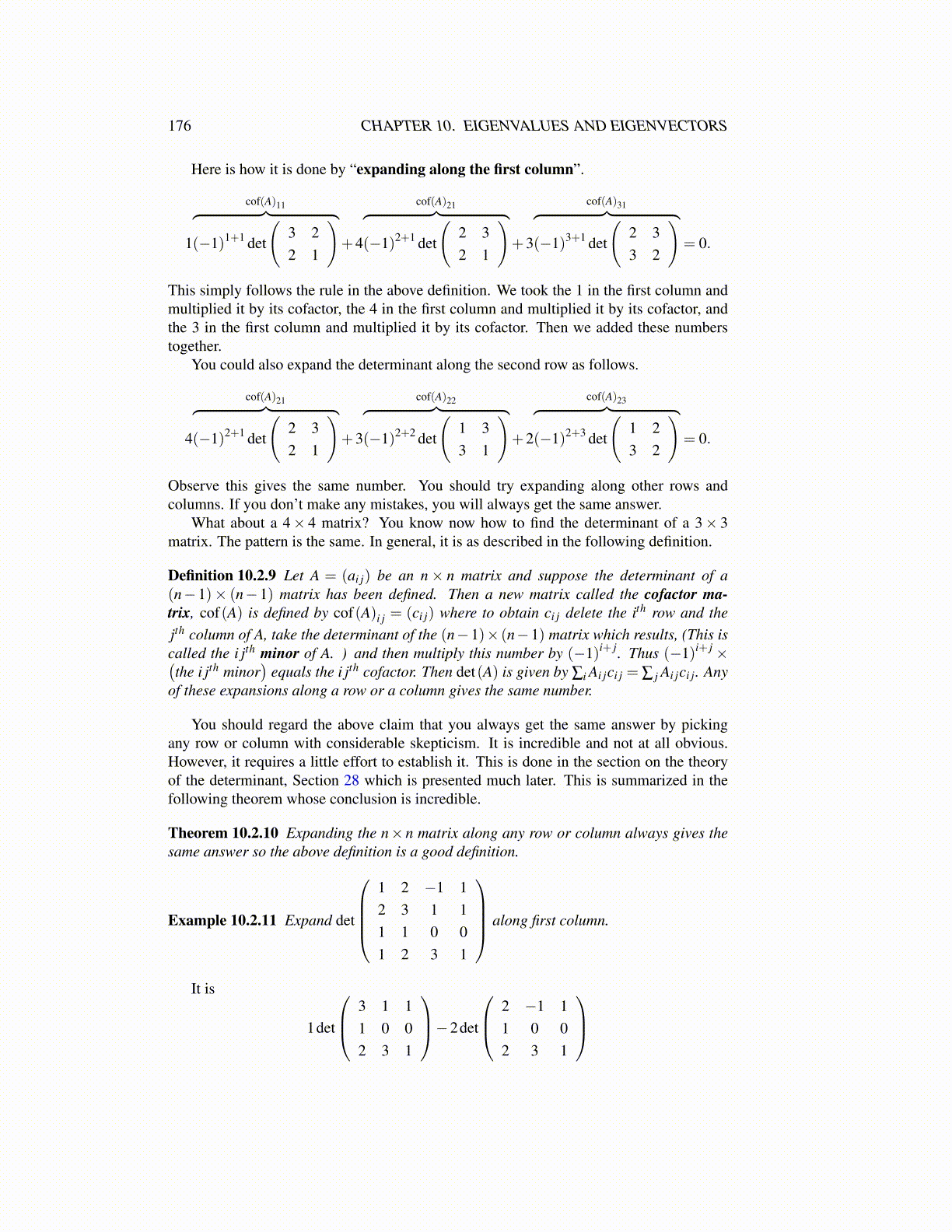
176 CHAPTER 10. EIGENVALUES AND EIGENVECTORS
Here is how it is done by “expanding along the first column”.
1
cof(A)11︷ ︸︸ ︷(−1)1+1 det
(3 22 1
)+4
cof(A)21︷ ︸︸ ︷(−1)2+1 det
(2 32 1
)+3
cof(A)31︷ ︸︸ ︷(−1)3+1 det
(2 33 2
)= 0.
This simply follows the rule in the above definition. We took the 1 in the first column andmultiplied it by its cofactor, the 4 in the first column and multiplied it by its cofactor, andthe 3 in the first column and multiplied it by its cofactor. Then we added these numberstogether.
You could also expand the determinant along the second row as follows.
4
cof(A)21︷ ︸︸ ︷(−1)2+1 det
(2 32 1
)+3
cof(A)22︷ ︸︸ ︷(−1)2+2 det
(1 33 1
)+2
cof(A)23︷ ︸︸ ︷(−1)2+3 det
(1 23 2
)= 0.
Observe this gives the same number. You should try expanding along other rows andcolumns. If you don’t make any mistakes, you will always get the same answer.
What about a 4× 4 matrix? You know now how to find the determinant of a 3× 3matrix. The pattern is the same. In general, it is as described in the following definition.
Definition 10.2.9 Let A = (ai j) be an n× n matrix and suppose the determinant of a(n−1)× (n−1) matrix has been defined. Then a new matrix called the cofactor ma-trix, cof(A) is defined by cof(A)i j = (ci j) where to obtain ci j delete the ith row and thejth column of A, take the determinant of the (n−1)× (n−1) matrix which results, (This iscalled the i jth minor of A. ) and then multiply this number by (−1)i+ j. Thus (−1)i+ j×(the i jth minor
)equals the i jth cofactor. Then det(A) is given by ∑i Ai jci j = ∑ j Ai jci j. Any
of these expansions along a row or a column gives the same number.
You should regard the above claim that you always get the same answer by pickingany row or column with considerable skepticism. It is incredible and not at all obvious.However, it requires a little effort to establish it. This is done in the section on the theoryof the determinant, Section 28 which is presented much later. This is summarized in thefollowing theorem whose conclusion is incredible.
Theorem 10.2.10 Expanding the n× n matrix along any row or column always gives thesame answer so the above definition is a good definition.
Example 10.2.11 Expand det
1 2 −1 12 3 1 11 1 0 01 2 3 1
along first column.
It is
1det
3 1 11 0 02 3 1
−2det
2 −1 11 0 02 3 1